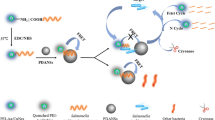Abstract
An ATP bioluminescence assay is frequently in the food industry as a commercially-available bacterial monitoring method because it is convenient and can monitor viable cells in food. However, such an assay suffers from low sensitivity and thus has limitations in monitoring highly pathogenic bacteria. In this study, we describe a method that improves the sensitivity by increasing the amount of ATP that is released from bacterial cells by subjecting the samples to heat treatment. When treated for 10 min at a temperature of 25 to 95°C in phosphate buffered saline (PBS) containing Escherichia coli O157:H7 or Salmonella enteritidis or Bacillus cereus at various concentrations, the relative luminescence unit (RLU) increased several times. Due to signal enhancement, the detection limit (LOD) of the ATP bioluminescence assay improved by about an order of magnitude in milk-containing microorganisms. Our results indicate that the simple heating step on the food samples before measurement is useful to improve the sensitivity of the ATP bioluminescence assay for bacterial detection.
Similar content being viewed by others
References
Oliver, S.P., Jayarao, B.M. & Almeida, R.A. Foodborne pathogens in milk and the dairy farm environment: food safety and public health implications. Foodborne Pathog. Dis. 2, 115–129 (2005).
Woo, I.-S., Rhee, I.-K. & Park, H.-D. Differential damage in bacterial cells by microwave radiation on the basis of cell wall structure. Appl. Environ. Microbiol. 66, 2243–2247 (2000).
CDC. Estimates of foodborne illness in the United States. Internet Address: http://www.cdc.gov/foodborneburden/2011-foodborne-estimates.html. Accessed Nov (2011).
Thomas, M.K. et al. Estimates of Foodborne Illness-Related Hospitalizations and Deaths in Canada for 30 Specified Pathogens and Unspecified Agents. Foodborne Pathog. Dis. 12, 820–827 (2015).
Hennekinne, J.-A., De Buyser, M.-L. & Dragacci, S. Staphylococcus aureus and its food poisoning toxins: characterization and outbreak investigation. FEMS Microbiol. Rev. 36, 815–836 (2012).
Kennedy, M. et al. Hospitalizations and deaths due to Salmonella infections, FoodNet, 1996-1999. Clin. Infect. Dis. 38, S142–S148 (2004).
Logan, N. Bacillus and relatives in foodborne illness. J. Appl. Microbiol. 112, 417–429 (2012).
Ayçiçek, H., Aydoğan, H., Küçükkaraaslan, A., Baysallar, M. & Başustaoğlu, A.C. Assessment of the bacterial contamination on hands of hospital food handlers. Food Control 15, 253–259 (2004).
Iqbal, S.S. et al. A review of molecular recognition technologies for detection of biological threat agents. Biosens. Bioelectron. 15, 549–578 (2000).
Casas, N., Amarita, F. & de Marañón, I.M. Evaluation of an extracting method for the detection of Hepatitis A virus in shellfish by SYBR-Green real-time RT-PCR. Int. J. Food. Microbiol. 120, 179–185 (2007).
Desai, P.T., Walsh, M.K. & Weimer, B.C. Solid-phase capture of pathogenic bacteria by using gangliosides and detection with real-time PCR. Appl. Environ. Microbiol. 74, 2254–2258 (2008).
Kim, J.S. et al. A novel multiplex PCR assay for rapid and simultaneous detection of five pathogenic bacteria: Escherichia coli O157:H7, Salmonella, Staphylococcus aureus, Listeria monocytogenes, and Vibrio parahaemolyticus. J. Food Prot. 70, 1656–1662 (2007).
Nordstrom, J.L., Vickery, M.C., Blackstone, G.M., Murray, S.L. & DePaola, A. Development of a multiplex real-time PCR assay with an internal amplification control for the detection of total and pathogenic Vibrio parahaemolyticus bacteria in oysters. Appl. Environ. Microbiol. 73, 5840–5847 (2007).
Lomakina, G.Y., Modestova, Y.A. & Ugarova, N. Bioluminescence assay for cell viability. Biochemistry 80, 701 (2015).
Luo, J. et al. Disposable bioluminescence-based biosensor for detection of bacterial count in food. Anal. Biochem. 394, 1–6 (2009).
Park, C.W., Park, J.-W., Lee, S.H. & Hwang, J. Realtime monitoring of bioaerosols via cell-lysis by air ion and ATP bioluminescence detection. Biosens. Bioelectron. 52, 379–383 (2014).
Shinozaki, Y. et al. Evaluation of an improved bioluminescence assay for the detection of bacteria in soy milk. Biocontrol Sci. 18, 1–7 (2013).
Velusamy, V., Arshak, K., Korostynska, O., Oliwa, K. & Adley, C. An overview of foodborne pathogen detection: In the perspective of biosensors. Biotechnol. Adv. 28, 232–254 (2010).
Lee, S.J., Park, J.S., Im, H.T. & Jung, H.-I. A microfluidic ATP-bioluminescence sensor for the detection of airborne microbes. Sens. Actuator B-Chem. 132, 443–448 (2008).
Sakakibara, T., Murakami, S. & Imai, K. Enumeration of bacterial cell numbers by amplified firefly bioluminescence without cultivation. Anal. Biochem. 312, 48–56 (2003).
Satoh, T., Takiguichi, N., Ohtake, H. & Kuroda, A. ATP amplification for ultrasensitive bioluminescence assay: detection of a single bacterial cell. Biosci. Biotechnol. Biochem. 68, 1216–1220 (2004).
Billard, P. & DuBow, M.S. Bioluminescence-based assays for detection and characterization of bacteria and chemicals in clinical laboratories. Clin. Biochem. 31, 1–14 (1998).
Champiat, D., Matas, N., Monfort, B. & Fraass, H. Applications of biochemiluminescence to HACCP. Luminescence 16, 193–198 (2001).
Gonthier, A., Guérin-Faublée, V., Tilly, B. & Delignette-Muller, M.L. Optimal growth temperature of O157 and non-O157 Escherichia coli strains. Lett. Appl. Microbiol. 33, 352–356 (2001).
Fehlhaber, K. & Krüger, G. The study of Salmonella enteritidis growth kinetics using Rapid Automated Bacterial Impedance Technique. J. Appl. Microbiol. 84, 945–949 (1998).
Warth, A. Relationship between the heat resistance of spores and the optimum and maximum growth temperatures of Bacillus species. J. Bacteriol. 134, 699–705 (1978).
Napolitano, M.J. & Shain, D.H. Distinctions in adenylate metabolism among organisms inhabiting temperature extremes. Extremophiles 9, 93–98 (2005).
Schneider, D.A. & Gourse, R.L. Relationship between Growth Rate and ATP Concentration in Escherichia coli: a bioassay for available cellular ATP. J. Biol. Chem. 279, 8262–8268 (2004).
Clarke, A. et al. A low temperature limit for life on Earth. PLoS ONE 8, e66207 (2013).
Bottari, B., Santarelli, M. & Neviani, E. Determination of microbial load for different beverages and foodstuff by assessment of intracellular ATP. Trends Food Sci. Technol. 44, 36–48 (2015).
Hattori, N. et al. Enhanced microbial biomass assay using mutant luciferase resistant to benzalkonium chloride. Anal. Biochem. 319, 287–295 (2003).
Park, C. et al. 3D-printed microfluidic magnetic preconcentrator for the detection of bacterial pathogen using an ATP luminometer and antibody-conjugated magnetic nanoparticles. J. Microbiol. Methods 132, 128–133 (2017).
Author information
Authors and Affiliations
Corresponding author
Rights and permissions
About this article
Cite this article
Lee, J., Park, C., Kim, Y. et al. Signal enhancement in ATP bioluminescence to detect bacterial pathogens via heat treatment. BioChip J 11, 287–293 (2017). https://doi.org/10.1007/s13206-017-1404-8
Received:
Accepted:
Published:
Issue Date:
DOI: https://doi.org/10.1007/s13206-017-1404-8




